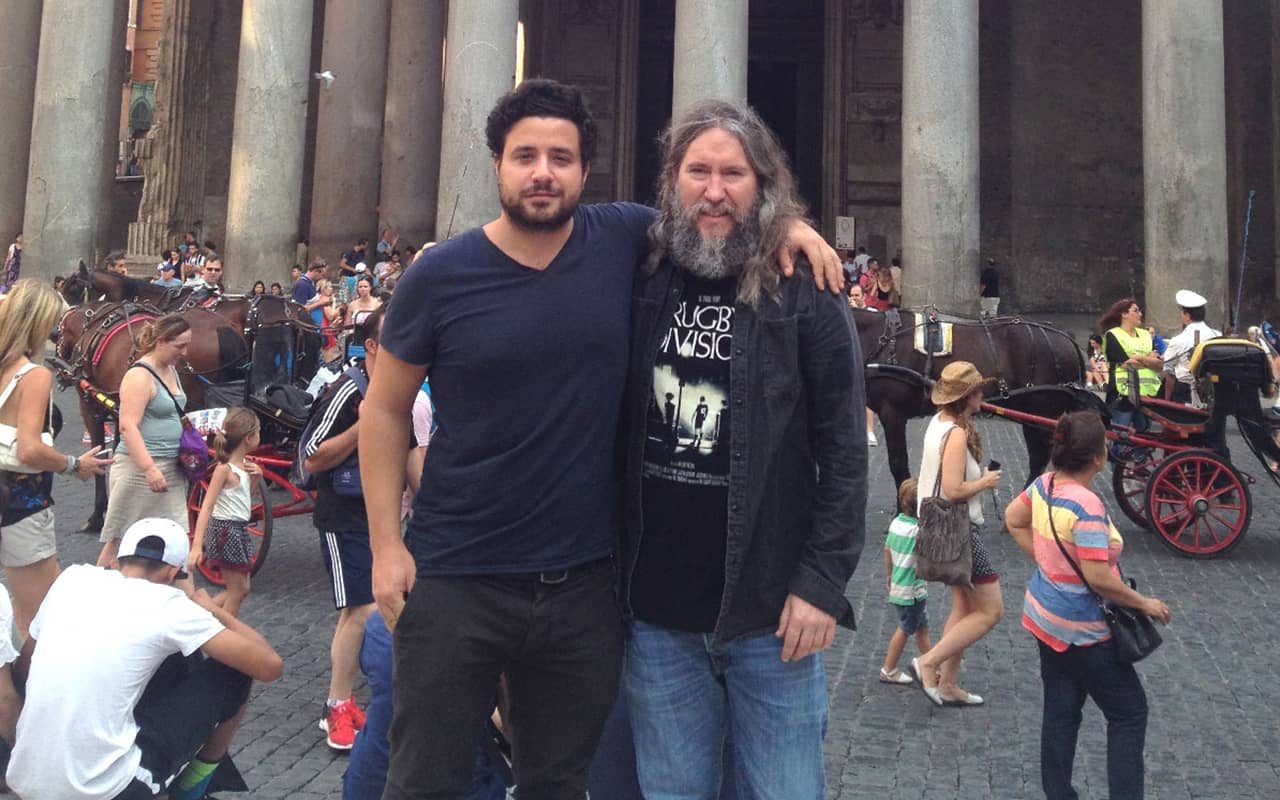 You want to learn Italian, but you’re worried that it may be too difficult for you.
You want to learn Italian, but you’re worried that it may be too difficult for you.
That’s a legitimate concern, especially since all kinds of websites want to tell you that it’s not a difficult language.
The truth?
Learning a language like Italian isn’t about how hard it is.
It’s about lifestyle design as a language learner.
And the real reason why you might find language learning difficult might surprise you.
And so will the solutions that make learning Italian much easier, no matter how you might struggle.
Ready?
Let’s dive in!
How Hard Is It To Learn Italian?
If you ask organizations like the Foreign Service Institute, they’ll tell you Italian is a “Category One” language.
According to them, you’ll need approximately 600 hours in the classroom to reach basic fluency.
They consider this amount of time makes Italian is an easy language to learn.
However, there’s a couple of mistakes here:
First, some people find tackling foreign languages in classrooms extraordinarily difficult. It’s not the language that’s difficult, but the way it’s being taught just doesn’t work.
Second, “basic fluency” means different things to different people. Sure, I passed the test after 635 hours learning German, but I sure didn’t feel fluent just because I earned a rubber stamp.
So let me give you a suggestion:
Reframe the question.
Instead of asking “Is Italian easy to learn?” or “Is learning Italian easy?” start to ask about how you actually like to learn languages.
Further, develop a willingness to explore other ways of learning. This is especially important if sitting for 600 hours in a classroom doesn’t sound fun or easy to you.
We’ll explore some of the best alternatives next.
5 Memory Techniques to Make Learning Italian Easy
Learning a language is not about how long it takes. It’s about:
- Making each step strategically fun
- Maximizing the best scientific principles
- Spending a bit of time learning how to learn
- Using tools like the Memory Palace for a language learning
- Using the Big 5 of language learning with spaced repetition
- Knowing how to deal with learning plateaus
All combined, these tools and tactics will help make any language much easier to learn.
Different language learning “gurus” will present variations on these ideas. Get them right, and you can learn Italian thoroughly. You can even build up your bilingualism in Italian to the point that you have time to start learning more than one language at the same time. Although it’s impractical without doing this first, you can make it work sooner than you might think.
With all of this in mind, let’s look at the core memory techniques needed for success in learning Italian. It boils down to what I call the Big Five.
One: Reading in Italian
You might be thinking… hang on! How am I supposed to start reading in Italian if I don’t even know it yet?
According to Olly Richards and many other language learning experts, it’s one of the best things you can do.
For one thing, it starts to create pattern recognition from day one. That means, you’ll start seeing individual words repeatedly, and dip your toes into Italian grammar.
The closer your mother tongue is to Italian, the easier you’ll find it to read the language and guess at what some of the words might mean.
Guessing is another thing that reading enables. It’s called anticipatory thinking, and is so much easier to do when reading than when you’re listening to spoken Italian.
According to the authors of my favorite Latin textbook, anticipatory thinking helps form understanding faster than looking up the answer. In memory science, guessing what words and phrases mean is a big part of active recall.
All of the best books on how to learn a language recommend reading, and I do too.
Two: Writing in Italian
Writing what you’re learning is fantastic for forming memories quickly. It requires you to try and formulate the memory, which is a huge part of how you will rewire your brain to know Italian.
It is literally a strategy of neuroplasticity and writing is also a practice that can help improve your reading speed. That’s due to “target scanning.” By following your hand writing words, you improve your ability to read printed words.
Another cool benefit of writing is that you can write out your learning goal. I sometimes use a normal notebook, and other times use The Freedom Journal.
Finally, you can try a suggestion given by my friend Luca. He suggests that you start translating texts that you’re really interested in as soon as possible.
Three: Listening to Italian
The great thing about listening is that you can listen and read at the same time. Just change your Netflix settings, and you’ll start seeing the subtitles on an Italian movie.
Please don’t underestimate this tactic. But also don’t rely on it entirely. It’s important to get yourself in contact with native speakers and listen to them during many conversations.
One of many benefits of learning a language is meeting new people. Unfortunately, we’re becoming a more software driven society, but there are a few language learning apps that can connect you with Italian speakers.
Finally, listening also involves anticipatory thinking, something Pimsleur built into his audio programs.
This kind of thinking is just a bit harder when you’re speaking with natives at the beginning of your journey. The more you read and write, the faster you can use this kind of thinking to figure out what people are saying.
Four: Speaking in Italian
Some people find speaking easy. Others clam up for a variety of reasons. They may be shy, worried about mistakes or just lacking in the mental strength needed to do it.
Although it is possible to learn how to read, write and understand spoken Italian without ever speaking it, you will make it harder for yourself.
So I suggest that even if you don’t want to speak with others, you still speak with yourself in the language. It will make remembering vocabulary and phrases much easier.

Five: Memorizing Italian Vocabulary & Phrases
Here’s where we tie everything together. Although each of the activities we just discussed are essential for learning Italian, it’s the memory strategies you’re about to discover that add rocket fuel to the game.
I have my favorite memory techniques, but the key is to explore yourself and find the ones you’re going to use.
The main mnemonic strategies are:
- The Memory Palace technique
- Mnemonic Imagery
- Using flashcards, Anki, Zettelkasten or a Leitner system
There’s no right or wrong here. The important thing is to explore and accelerate your journey with Italian by adding some kind of memory technique. And if you find that you prefer to read, write, speak and listen without mnemonics, that’s cool too.
Just realize that I’m not the only scholar who finds mnemonics work incredibly well for language learning. You just have to be willing to learn how to use them properly.
The Basic Components of Italian & How to Learn Them
When it comes to exactly what you need to learn to enjoy any level of fluency in Italian, there are a number of components.
Most of us need to start with basic vocabulary and phrases. But it’s also important to focus on these aspects of the language.
Italian Phonetics
Like all languages, there’s a particular way that Italian sounds. Its melodious vowels contribute to the musicality of the language.
We’ve already talked about the importance of listening and speaking, and here’s a bit more nuance on that:
Practice mimicking native speakers.
Find a recording and then record yourself speaking the same phrases. It takes a bit of effort, but by hearing yourself in comparison with the native speaker, you’ll train your pronunciation of Italian faster. Some language learners call this tactic “chorusing.”
Italian Grammar
Many people struggle with grammar, and there’s no doubt that it presents several challenges.
You’re going to be using the Big 5 and developing pattern recognition almost on autopilot. But it’s also useful to spend some time learning about:
- Masculine and feminine nouns
- Definite and indefinite articles
- Contractions and prepositions
- Verb conjugation
At more advanced levels, you’ll come across more considerations, but these are a great start. Again, you’ll come across them naturally by using the Big 5, so grammar is nothing to stress about.
I’m not saying not to learn it, but it’s something you can mostly pick up from reading, writing, speaking and listening. If you want to memorize the names of grammatical principles, Memory Palaces will help with that.
And you can memorize 5-10 examples of any Italian grammar rule quickly to increase your pattern recognition of how they work in practice.
Is Italian Hard To Learn For English Speakers?
At the end of the day, the answer is that Italian is only hard if you decide that it is.
Personally, I don’t think it’s helpful to think in terms of hard and easy. Instead, I suggest thinking in terms of goals with milestones.
Be open to exploring and experimentation.
And when you hit a snag, because you’re using the Big 5, you’ll have speakers to help you through it.
At the end of the day, language learning is kind of like a game of logic. Why following common sense is difficult for some people often comes down to luck. They haven’t been exposed to mental training or critical thinking skills.
As a result, they are yanked around by their cognitive biases, instead of being able to follow a simple recipe.
If that’s you, don’t blame yourself. I’ve been in similar situations with other things I’ve needed to learn.
Training my memory was the thing that helped me the most – especially when it comes to doing what it takes to learning a language.
If you’d like help from a holistic memory training perspective, get my free course here:
It focuses on the memory techniques you can use to not only help yourself absorb Italian in ways that are fun and easy.
You’ll also free yourself to read anything you want in Italian, speak about it, listen to lectures on that topic, and do whatever it is you feel called to do in the language.
So what do you say?
I feel that you have every advantage when it comes to learning Italian, especially because you already know enough English to read this page.
And every time you come across something challenging in Italian, just remember that it can be a fun and exciting game. You just have to think about it that way and use these tactics to make it so.
Related Posts
- The Most Controversial Language Learning Technique In The World
In this episode of the Magnetic Memory Method Podcast ... controversy about using mnemonics in…
- Stoic Secrets For Using Memory Techniques With Language Learning
Christopher Huff shares his Stoic secrets for using memory techniques when learning a language. You'll…
- Teach Yourself Using The Best Language Learning Books By Olly Richards
Olly Richards shares the background to his Teach Yourself language learning short story series of…









